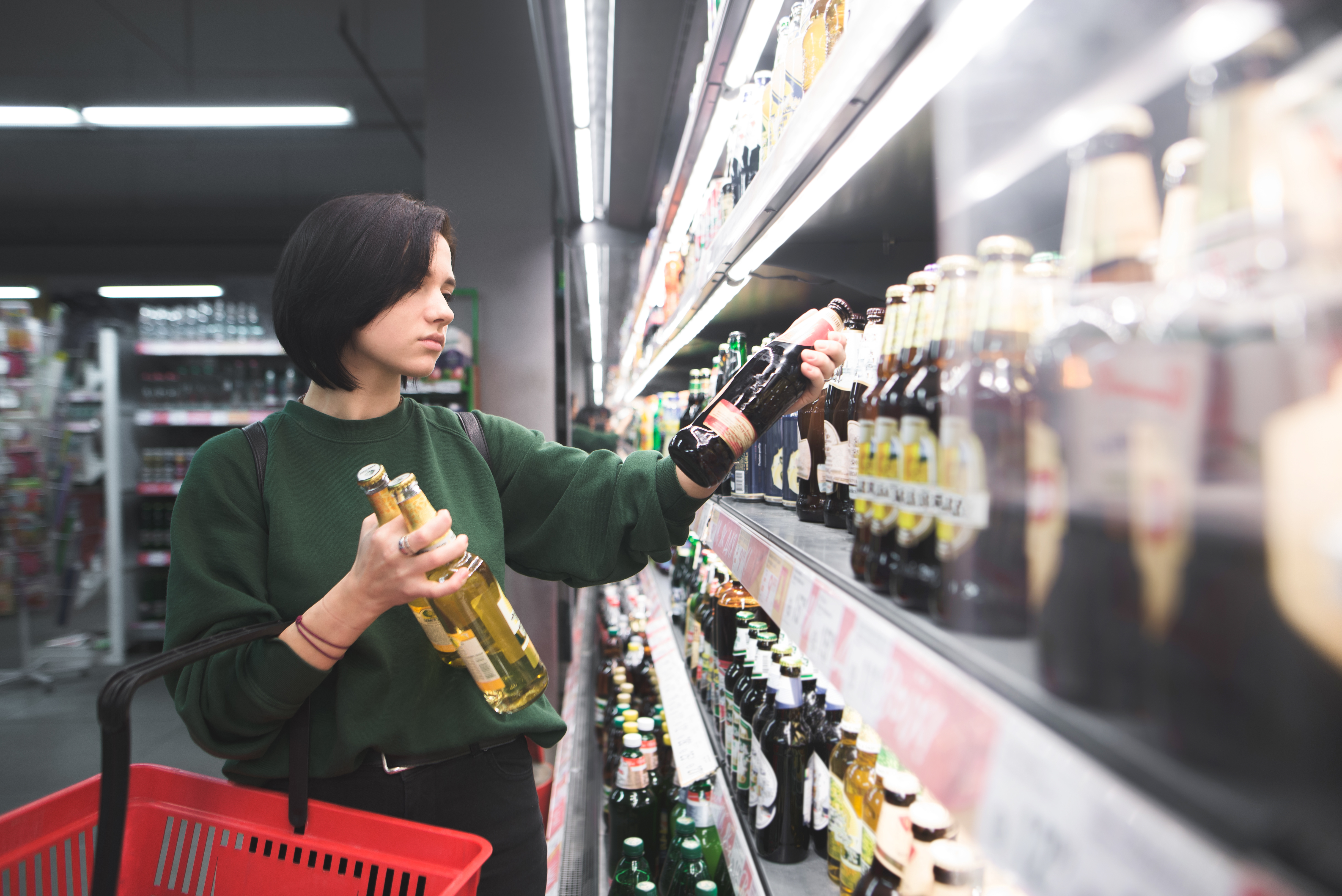Informed Families Catalyst
Topics: President's Message, alcohol, Informed Families, alcohol use, alcohol abuse
Try Dry January . . . or Dry February . . . or Dry March . . .
Posted by Peggy B. Sapp, President & CEO on January 9, 2023 at 11:32 AM
President's Message - January 2023
Let me start by wishing all of you a happy and healthy new year! And to thank you all for the work you’ve done over the last year to help keep our children safe from drugs of all kinds. We’ve accomplished some good things together, and I want to urge you to keep up the fight.
Topics: President's Message, alcohol, Informed Families, alcohol use, alcohol abuse
Red Ribbon Week Helps to Create Herd Immunity
Posted by Peggy B. Sapp, President & CEO on October 9, 2022 at 7:00 AM
President's Message - October 2022
Red Ribbon is about creating herd or community immunity to the alcohol and drug problems America is facing.
Topics: President's Message, teenagers, alcohol, Informed Families, teens, drugs
Virtual Scavenger Hunt on Underage and Binge Drinking
Posted by Informed Families on May 27, 2020 at 2:39 PM
Congratulations to the FIVE WINNERS of the Informed Families Virtual Scavenger Hunt focused on the dangers of underage and binge drinking. They will each receive a $25 Amazon gift card for answering all of the game questions correctly. All winners were randomly selected.
-
Noelle Taylor – Collier County
-
Arbens Darius – Hillsborough County
-
Gio Vanegas – Miami-Dade County
-
Lelani Delgado – Orange County
-
Heather Newby – Seminole County
Informed Families would also like to congratulate Janine Mojica from Lake Nona High School in Orange County on winning a $50 Amazon gift card for having the most student participation in the Virtual Scavenger Hunt.
Thank you to everyone who joined in the game. We hope it was informative and fun. Stay tuned for future contests and games!
The correct answer to each question was posted on the Informed Families website at 9 PM the day after the question was sent out. Here are all the questions and answers in case you missed any or weren't able to join in the fun.
Topics: underage drinking, alcohol, binge drinking, alcohol use, contest
Why Do We Turn Everything Into a Reason to Drink?
Social gatherings, bars and dining in restaurants are off limits for Cinco de Mayo this year, but many of us still plan to celebrate in some fashion - probably with a Mexican beer or margarita in hand. Have you ever stopped to think about why we turn everything into an opportunity to drink alcohol? Cinco de Mayo generates beer sales on par with the Super Bowl.
How did Cinco de Mayo (which commemorates the Mexican Army's victory over the French Empire at the Battle of Puebla, on May 5, 1862) turn into a bigger celebration day in the United States than Mexico? It’s all about selling you something of course. Cinco de Mayo really took off when beer companies started sponsoring Cinco de Mayo celebrations to promote and sell beer. Is this really that different from the advertising tactics employed by Big Tobacco?
Topics: President's Message, holidays, alcohol, social norms, alcohol use
According to the 2019 Monitoring the Future Survey:
- Marijuana continues to be the most commonly used illicit drug by adolescents.
- One in four 12th graders say they vaped nicotine in the past month, along with 1 in 5 10th graders, and nearly 1 in 10 eighth graders.
- Many teens say they vape for the flavor, to experiment, for social reasons, or to feel good.
- From 2018-2019, the number of 12th graders saying they vape because they are "hooked" more than doubled to 8.1%, up from 3.6%.
Parents and educators can join others across the country to help students make informed decisions by sharing fact-based information about drugs and alcohol.
Topics: drug, alcohol, teens, nida, drug prevention, drugs, drug use, alcohol use, vaping
A Dangerous Mix: Spring Break and Underage Drinking
Posted by Informed Families on March 6, 2020 at 1:16 PM
We’ve all seen the headlines:
“Underage drinking, drugs leads to nearly 1,000 arrests on Gulf Coast beaches”
“Sheriff's Office cracks down on underage drinking in Destin”
“Police being extra vigilant on drunk driving during spring break
"Spring Break 2019 sees drunk students descend on beach to guzzle booze, twerk and pass out in outrageous parties”
If you are the parent of a college-age student preparing to head off to a spring break destination soon, you are likely concerned about whether or not they will engage in underage or binge-drinking and wind up in lots of trouble.
Topics: positive parenting, college students, underage drinking, alcohol, teens, binge drinking, samhsa, alcohol use, alcohol abuse
President's Message - March 2020
Posted by Peggy B. Sapp, President & CEO on March 2, 2020 at 8:00 AM
While the Media Was Focused on Opioids Look What Happened
While the media has been focused on the opioid crisis, the number of alcohol-related deaths more than doubled from 35,914 in 1999 to 72,558 in 2017. Women have been impacted the most.
According Dr. George F. Koob, National Institute on Alcohol Abuse and Alcoholism (NIAAA) Director, “alcohol is a growing women’s health issue. The rapid increase in deaths involving alcohol among women is troubling and parallels the increases in alcohol consumption among women over the past few decades.”
Trends like Mommy wine culture, which normalizes the idea of drinking alcohol as a way to cope with stress, and sipping while shopping have become commonplace. We should always keep in mind that our kids are watching our behaviors. Do we want them to turn to alcohol as a way to escape from everyday stress or as the only way to relax and unwind?
They are bombarded with images promoting alcohol in that way already. A new report from the Journal of Studies on Alcohol and Drugs says alcohol ads are leading teens to drink. A study in the Preventive Medicine journal found that social media could be sending out positive messaging about alcohol use as well.
Sign the Safe Homes Smart Parents pledge, and let’s work together to stem the tide of alcohol-related deaths by discouraging underage and binge drinking.
Peggy
Topics: President's Message, safe homes smart parties, underage drinking, alcohol, teens, binge drinking, Peggy Sapp, media, alcohol abuse
Sipping while shopping? Slippery slope may lead to increased alcohol use
Posted by Sergio Perez on February 21, 2020 at 5:23 PM
Have you noticed the new trend of major retailers and grocery store chains increasingly allowing, or even encouraging, the consumption of alcohol while patrons shop? A short segment on Good Morning America detailed this new trend as a quirky and fun new way for stores to encourage their customers to spend more, but are we missing a bigger issue altogether?
Stores that encourage customers to drink while they shop are helping to normalize the consumption of alcoholic beverages throughout the day in a very public setting. Are we teaching our kids that it is OK to go about your day with a glass of mimosa on your hand?
Topics: alcohol, social norms
Are you thinking about participating in ‘Dry January’ - a month-long break from alcohol? We already know giving up alcohol for a month could leave you richer, slimmer and healthier – but if you’re in need of some more reasons to maintain your break with Pinot, check out some of the unexpected benefits of giving up alcohol:
Topics: tips, alcohol, alcohol use







